Cataloochee
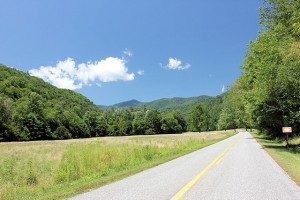
Cataloochee
Written By: Shawn Dunnaway
Exploration Date: July 30, 2013
Weather: Sunny and 75°
Elevation: Around 2,000
Cataloochee Ranger Station: 35.629197, -83.093107
Getting to Catalochee was a relief after driving for what seemed like an eternity down the Old Cataloochee Turnpike. It was a beautiful day with sunny skies and temperatures in the mid 70s, which made our experience at Cataloochee all the more rewarding.
Cataloochee was the largest settlement affected by the creation of the Great Smoky Mountains National Park. It is a valley that was once the home to 1,200 people. Numerous farms, orchards, churches, schools, and places of commerce dotted the landscape of Cataloochee. The valley reminded me of a smaller Cades Cove, especially with several of the original structures preserved
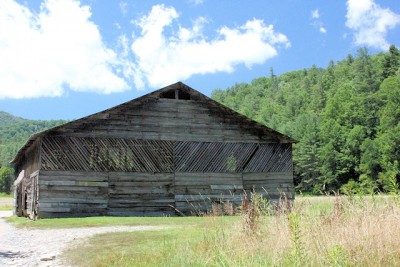
One of many barns located in Cataloochee.
for experiencing.
One of many barns located in Cataloochee.
We were not able to experience all of Cataloochee, but we wanted to share with you what we discovered during our short time there. Unfortunately, we only scratched the surface by visiting just a couple of the historic buildings. One could easily spend the day there, taking in all the historic significance of the community.
Our first of two stops was the Beech Grove School, which was once part of the Big Cataloochee School District. Interestingly there were two other school districts in the area: Little Cataloochee and Caldwell Fork, which operated different school houses. Beech Grove is the only school house to survive.
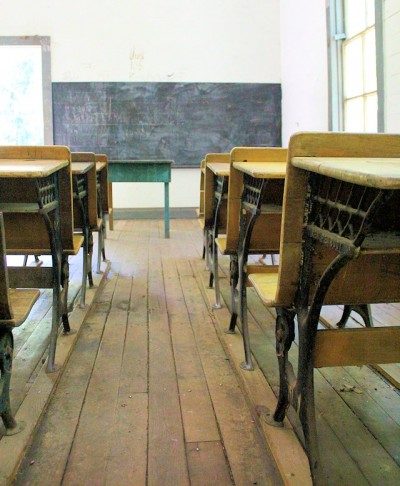
Inside the schoolhouse at Cataloochee.
The school was built in 1901 and taught several dozen students of all ages.
The typical school day was 8:00 a.m. to 4:00 p.m. with the term usually lasting just three months – November to January.
Sometimes, if the funding was there, school would continue until March. The students were taught reading, math, writing, grammar, geography and spelling.
The old school building was interesting to see. It was certainly not plumb, making me wonder how the structure was built to begin with. Perhaps time wore the structure of the building over the last 100 years, but it was a bit disorienting with the odd angles.
One of the neat features in the schoolhouse was the old desks. It provided some photo ops for us and a glimpse of what the classroom setting was like over a century ago.
Our second stop was the Caldwell Place which was built in 1903. This house is likely the most significant home left standing in the national park, from both a preservation and exquisiteness standpoint.

The Caldwell Place in Cataloochee.
The first striking feature for me personally was the beautiful, quaint stream that flowed in front of the house. It’s every mountain-lover’s dream to have a stream running through the front yard, right? There was a small footbridge crossing the stream and a boardwalk running through a small bog up the house.
As we approached the house we could see the ornate detail of the structure.
And once we were inside, we could tell that the Caldwell family did well for themselves, considering the location and circumstances of the period.
There was a beautiful staircase with fine woodworking that headed to the second floor. Downstairs was the remains of what was once a lovely fireplace. There were several large rooms downstairs.
Old newspapers used as backing for wallpaper inside the Caldwell house in Cataloochee.
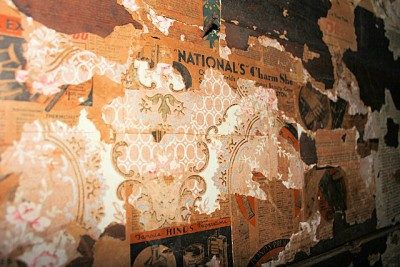
Old newspapers used as backing for wallpaper inside the Caldwell house in Cataloochee.
Upstairs the rooms were also large but the ceilings were quite low, probably less than 7 feet. One of the interesting things about the second level was the remains of the wallpaper. The walls were covered in old newspaper. I looked for date on the newsprint for a long time but couldn’t find one. But on top of the newspaper were traces of ornate wallpaper. It was further evidence that this home was one of the finest in Cataloochee.
Inside a closet upstairs I was able to look up into the attic. For fun, I took a flash photo because I couldn’t see anything. When I looked at my photos later,
I discovered the attic was home to a few dozen bats, which you can see in a photo below this article.
The Caldwell Place is beautiful and desirable even with today’s standards, except it didn’t have indoor plumbing or electricity.
We drove around Cataloochee taking some
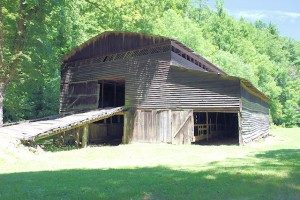
The Will Messer barn in Cataloochee.
photos of other structures including the Palmer Chapel, the Will Messer Barn and the barn across the road from the Caldwell Place. If you have time, you can park and hike the Little Cataloochee Trail and see more historic buildings and old homesteads.
Catalochee is a little difficult to get to, especially from the Gatlinburg area. We took the “scenic route” by using TN 32/Mt. Sterling Road, which turned into the Old Cataloochee Turnpike. It is at least a two hour drive this way from Gatlinburg and isn’t for folks who are prone to car sickness.
The best way to go is from Cherokee to Maggie Valley, then head up US 276 to Cove Creek Road. From Maggie Valley, Cataloochee is 15 miles or about a 40 minute drive.
Serious history buffs will love Cataloochee and folks with an appreciation of life in the early 20th century will find it satisfying.
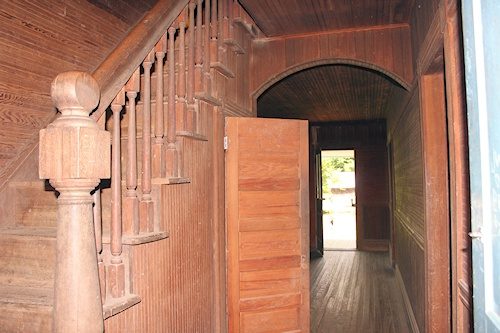
Caldwell Place Stairs
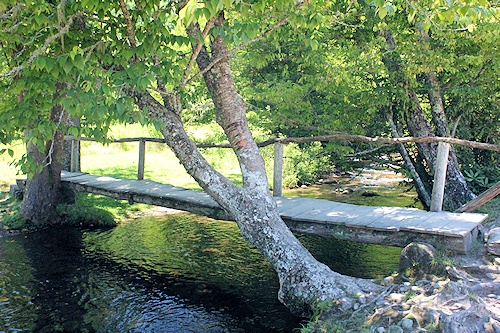
The small footbridge across the stream at the Caldwell Place
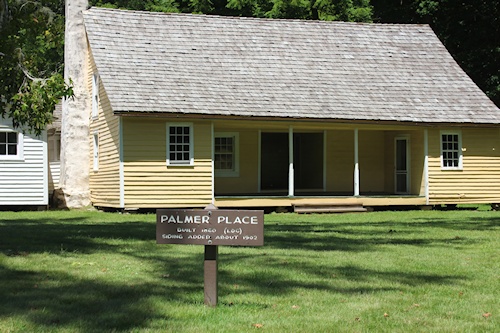
The Palmer Place
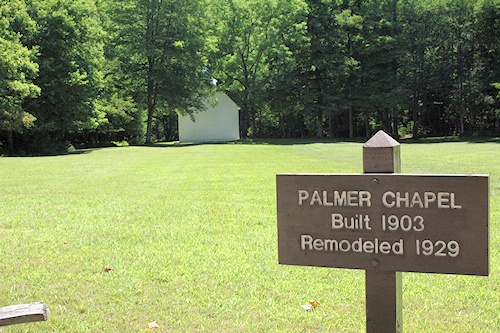
Palmer Chapel
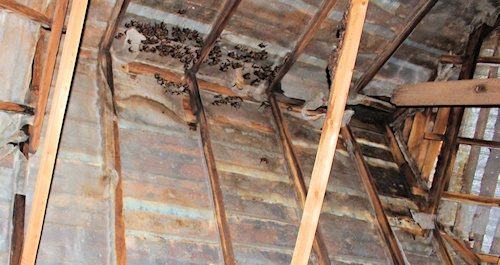
Bats in the attic of the Caldwell House
